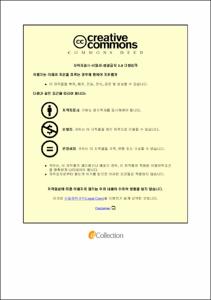후기 아동 체질량지수(BMI) 변화궤적의 유형과 영향요인
- Alternative Title
- A Study on the Types and Influencing Factors of the Change Trajectory of Body Mass Index (BMI) in Late Childhood : Using 2018~2020 Panel Study on Korean Children
- Abstract
- 본 연구는 후기 아동 체질량지수(Body Mass Index, BMI)의 시간의 흐름에 따른 변화궤적 유형을 확인하고 그 유형 분류에 영향을 미치는 요인을 확인하는 데 목적이 있다. 이를 통해 아동의 비만과 건강요인, 식습관 요인의 관련성을 검증하고자 하였다. 분석방법으로는 성장혼합모형(Growth Mixture Modeling)을 활용하여 모집단 내의 이질성을 허용해 하위집단별로 변화궤적을 추정하였다. 또한, 서로 다른 변화궤적 유형 분류에 영향을 미치는 요인을 개인요인(성별, 이차성징여부), 건강행태요인(수면시간, 좌식여가시간, 실내 신체활동 여부, 실외 신체활동 여부, 즐겨하는 운동 유무), 식습관요인(탄산음료섭취 여부, 인스턴트식 섭취 여부)으로 범주화하여 다항 로지스틱 회귀분석을 실시하였다.
본 연구에서는 한국아동패널(Panel Study on Korean Children, PSKC) 11차년도(2018년), 12차년도(2019년), 13차년도(2020년) 자료를 분석에 사용하였다. Mplus 8.0을 사용하여 분석한 본 연구의 주요 결과를 요약하면 다음과 같다.
첫째, 후기 아동 체질량지수(BMI)의 변화궤적을 분석한 결과 ‘정상체중 유지(58%)’, ‘과체중 유지(32%)’, ‘비만 유지(10%)’의 세 가지 유형이 존재하는 것을 확인하였다. 둘째, 아동 체질량지수의 변화궤적 유형 분류에 영향을 미치는 요인을 살펴본 결과, 성별, 수면시간, 좌식여가시간이 영향을 미치는 것으로 나타났다. 성별로는 남자 아동이 여자 아동보다 ‘정상체중 유지’ 대비 ‘과체중 유지’, ‘비만 유지’ 집단에 속할 확률이 높았다. 또한, 수면시간이 짧을수록 ‘정상체중 유지’ 대비 ‘비만 유지’ 집단에 속할 가능성이 컸으며, 좌식여가시간이 길수록 ‘정상체중 유지’ 대비 ‘과체중 유지’, ‘비만 유지’ 집단에 속할 확률이 높았다.
본 연구는 후기 아동 체질량지수의 변화를 종단적으로 살펴보았으며 변화궤적의 이질성을 실제 자료에서 확인했다는 점에서 의의가 있다. 본 연구의 결과를 종합하면 정상체중 유지 유형과 비교했을 때 성별, 수면시간, 좌식여가시간에 따라 과체중 또는 비만이 될 가능성이 달라졌다. 따라서 이를 바탕으로 향후 아동 비만 예방 교육 시 여자 아동보다 남자 아동에 초점을 두어야 할 필요성을 시사한다. 또한, 아동에게 적절한 수면시간과 좌식여가시간을 갖도록 지도가 필요하며 시간에 대한 구체적인 논의는 후속연구를 통해 규명이 필요할 것으로 보인다. | The purpose of this study is to identify the type of change trajectory over time in the late Child Body Mass Index (BMI) and to identify the factors that affect the classification of the type. Through this, we tried to verify the relationship between obesity, health factors, and eating habits factors in children. As an analysis method, the change trajectory was estimated for each subgroup by allowing heterogeneity within the population using the Growth Mix Modeling. In addition, multinomial logistic regression analysis was conducted by categorizing factors that affect the classification of different types of change trajectories into individual factors (gender, secondary characteristics), health behavior factors (sleep time, sitting leisure time, outdoor physical activity, and exercise).
In this study, data from the 11th year (2018), 12th year (2019), and 13th year (2020) of the Panel Study on Korean Children (PSKC) were used for analysis. The main results of this study analyzed using Mplus 8.0 are summarized as follows.
First, as a result of analyzing the trajectory of changes in the later child body mass index (BMI), it was confirmed that there were three types: "normal weight maintenance (58%), "overweight maintenance (32%), and "obesity maintenance (10%). Second, as a result of examining the factors affecting the classification of trajectory types of changes in the child body mass index, gender, sleep time, and sedentary leisure time were found to have an effect. By gender, male children were more likely to belong to the "maintain overweight" and "maintain obesity" groups than female children. In addition, the shorter the sleep time, the more likely it was to belong to the "maintain obesity" group compared to "maintain normal weight," and the longer the sitting leisure time, the more likely it was to belong to the "maintain overweight" and "maintain obesity" group.
This study is meaningful in that it longitudinally examined changes in the late child body mass index and confirmed the heterogeneity of the change trajectory in actual data. Summarizing the results of this study, the possibility of becoming overweight or obese changed depending on gender, sleep time, and sedentary leisure time compared to the normal weight maintenance type. Therefore, based on this, it suggests the need to focus on male children rather than female children in future childhood obesity prevention education. In addition, guidance is needed to ensure that children have appropriate sleep time and sedentary leisure time, and specific discussions on time are expected to be clarified through follow-up studies.
- Issued Date
- 2023
- Awarded Date
- 2023-08
- Type
- Dissertation
- Alternative Author(s)
- Song, Hyun Gyung
- Affiliation
- 제주대학교 보건복지대학원
- Department
- 보건복지대학원 보건학과
- Advisor
- 김수영
- Table Of Contents
- I. 서론 1
1. 연구배경 및 필요성 1
2. 연구목적 4
3. 연구가설 4
II. 연구 방법 5
1. 연구자료 5
2. 연구대상 7
3. 연구변수 8
4. 자료분석 11
III. 연구 결과 16
1. 후기 아동의 체질량지수 변화궤적(잠재성장모형 분석) 16
2. 후기 아동의 체질량지수 변화유형(성장혼합모형 분석) 18
3. 후기 아동의 체질량지수 변화궤적 유형에 대한 영향요인 24
Ⅳ. 논의 26
Ⅴ. 결론 및 제언 29
참고문헌 31
Abstract 35
- Degree
- Master
- Publisher
- 제주대학교 보건복지대학원
- Citation
- 송현경. (2023). 후기 아동 체질량지수(BMI) 변화궤적의 유형과 영향요인.
- Appears in Collections:
- Graduate School of Public Health and Welfare > Public Health
- 파일 목록
-
-
Download
 후기 아동 체질량지수(BMI) 변화궤적의 유형과 영향요인.pdf
기타 데이터 / 1.1 MB / Adobe PDF
후기 아동 체질량지수(BMI) 변화궤적의 유형과 영향요인.pdf
기타 데이터 / 1.1 MB / Adobe PDF
-
Items in Repository are protected by copyright, with all rights reserved, unless otherwise indicated.